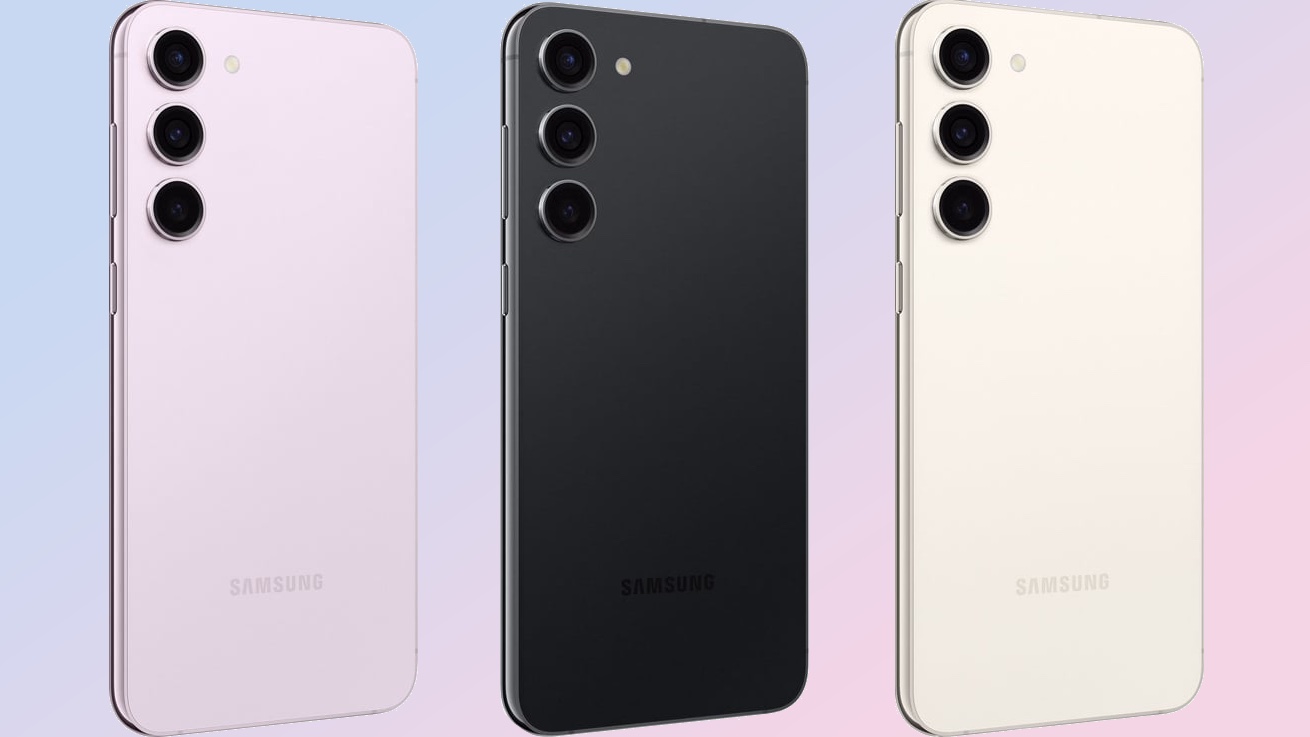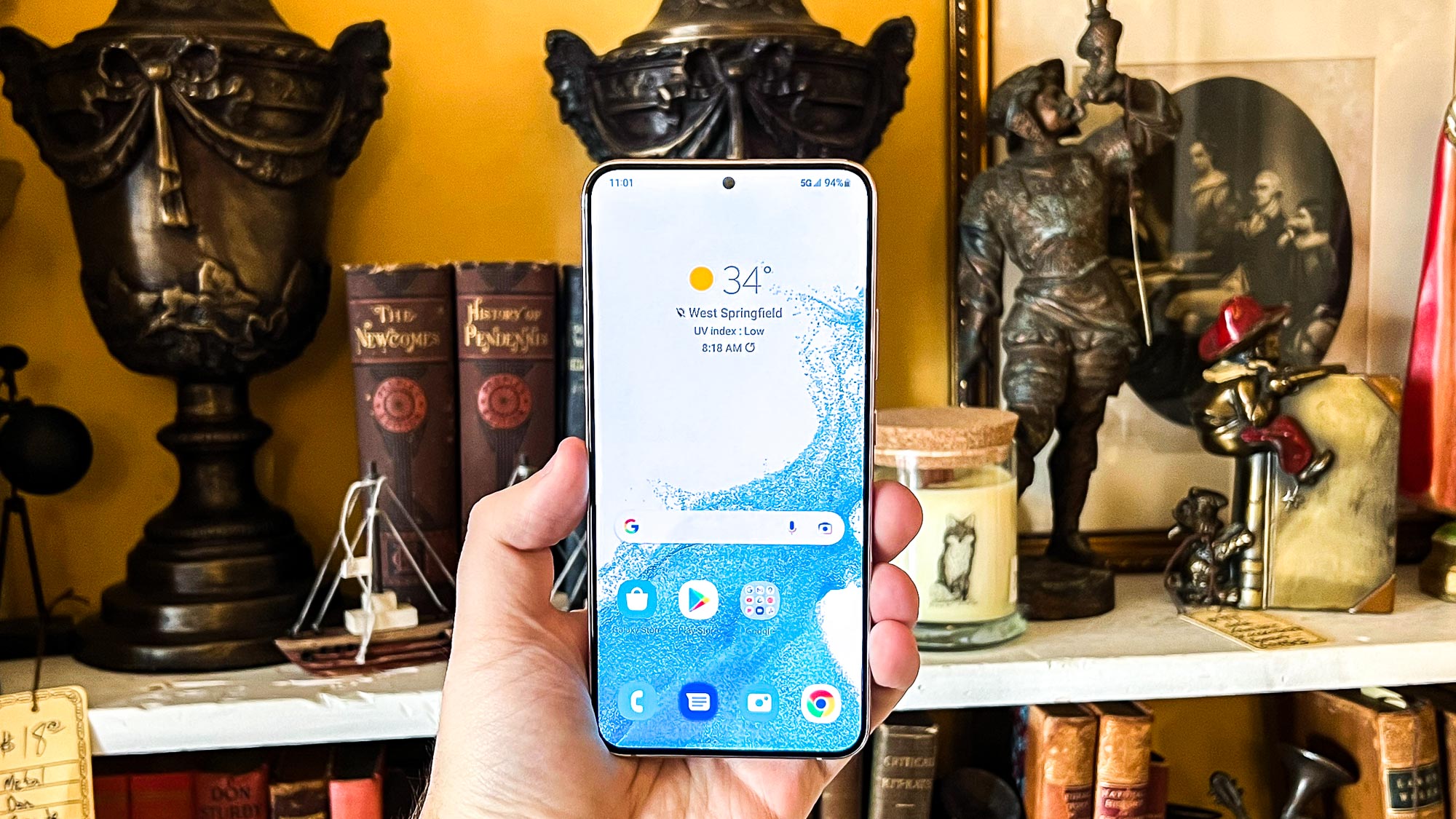Samsung Galaxy S23 Plus — seriously, who needs this?
It's getting harder to tell the difference between Samsung's entry-level flagship and the Plus model

Excitement is building for the Samsung Galaxy S23 launch, which is just two weeks away if you assume that the phones will arrive at the February 1 Galaxy Unpacked event. Naturally, the Galaxy S23 Ultra and its rumored 200MP main camera are getting the bulk of the chatter, but you'll also find a decent amount of speculation about performance boosts, display features and other changes coming to the entire Galaxy S23 lineup.
What you won't hear a lot of is any speculation about the Galaxy S23 Plus. The Ultra model commands a lot of attention, as it's the premium phone receiving all the high-end updates and features Samsung has planed. The base Galaxy S model generates some interest, too, as it contains enhancements finding their way to all three new phones. But the Plus version? It's often lost in the shuffle.
Part of that is by design, as Samsung has tended to position the Plus as essentially a bigger-screen version of the standard Galaxy S handset. You want the basics in a Samsung flagship, you pick between the standard version and Plus model; anything more, and it's the Ultra for you.
It's hard to quibble with Samsung's approach, given its dominance over the rest of the Android phone market. But this time around, the lack of buzz surrounding the Galaxy S23 Plus seems especially noticeable. You may even find yourself asking whether there's still a place for a Plus-sized phone in Samsung's flagship plans.
The case for the Galaxy S23 Plus
The short answer to that speculation is of course there's a place for the Galaxy S23 Plus if for no other reason than people love big-screen phones.
Smartphones with screens smaller than 6 inches are practically unheard of these days. Research firm Omdia reported in January 2022 that the average screen size for a phone was 6.3 inches — the best small phones notwithstanding — and there's no reason to believe that's inched downward in the last 12 months. With more of us relying on phones as our primary device, people seemingly prefer the ample screen space over a more compact design.

Well, not me necessarily — one of my favorite things about last year's Galaxy S22 was how it could easily fit in my hand despite a 6.1-inch display. But for anyone who finds that space too constraining, Samsung offers a 6.7-inch Plus model for a couple hundred dollars more. (It's widely believed that the Galaxy S23 and S23 Plus are going to keep the respective 6.1- and 6.7-inch screen sizes of their predecessors.)
A Plus phone also gives smartphone shoppers some pricing flexibility when it comes to the Galaxy S lineup. Maybe you want a bigger screen, but you're not inclined to pay up for Samsung's Ultra phone. For the last couple years, a Plus version has allowed you to enjoy a large-screen phone with a starting price that's less than $1,000. Assuming Samsung isn't considering a price hike, that could continue with the Galaxy S23 Plus.
There are other benefits to a larger phone beyond the increased display real estate. A bigger phone can contain a bigger battery, for example, so it's no surprise that the Galaxy S22 Plus lasted 2 hours longer on our battery test than the S22 did when we tested both phones last year. We'd expect the Galaxy S23 Plus to also outlast the upcoming base model (though hopefully, both phones improve upon the battery life of their predecessors, as none made our list of the phones with the longest battery life).
Samsung tries to distinguish the Plus from the base model in other, more subtle ways. The Galaxy S22 Plus, for example, offered the same peak brightness as the Galaxy S22 Ultra, and those phones both supported 45W charging speeds to the 25W charging available on the Galaxy S22. For the S23 family, we're anticipating those distinctions continue.
Galaxy S23 Plus concerns
As nice as it is to have the extra screen space on Plus version of the Galaxy S — and the battery life boost that comes with it — it sometimes feels as if there's not enough distinguishing the Plus from the base model. That feels especially true with the upcoming Galaxy S23 release, with rumors doing little to separate the 6.1- and 6.7-inch phones from one another as you can see in our Galaxy S23 vs. Galaxy S23 Plus vs. Galaxy S23 Ultra comparison.
| Row 0 - Cell 0 | Galaxy S23 (rumored) | Galaxy S23 Plus (rumored) |
| Screen size | 6.1-inch AMOLED (2,340x1.080) | 6.6-inch AMOLED (2,340x1,080) |
| CPU | Snapdragon 8 Gen 2 | Snapdragon 8 Gen 2 |
| RAM | 8GB | 8GB |
| Storage | 128GB, 256GB | 128GB, 256GB |
| Rear cameras | 50MP main, 12MP ultrawide, 10MP telephoto (3x zoom) | 50MP main, 12MP ultrawide, 10MP telephoto (3x zoom) |
| Front cameras | 12MP | 12MP |
| Battery size | 3,900 mAh | 4,700 mAh |
| Charging speed | 25W wired | 45W wired |
| Size | 5.8 x 2.8 x 0.3 inches | 6.2 x 3 x 0.3 inches |
| Weight | 6 ounces | 7.3 ounches |
| Colors | Phantom Black, Green, Lavender, Cream | Phantom Black, Green, Lavender, Cream |
For example, while Samsung's Plus flagship gives you extra screen space, it doesn't take the extra step that the Ultra enjoys by adding support for the S Pen. We're not talking about including a built-in stylus with the Plus as Samsung started doing with the Galaxy S22 Ultra. But just adding support for an optional accessory would give shoppers another reason to consider the Plus over the regular Galaxy S phone.
Cameras would be another area where Samsung's different flagship models are becoming too similar. Last year, the Galaxy S22 and S22 Plus shared the same camera hardware, and that's likely to continue with this year's Galaxy S23 models if rumors are to believed. That's great news for base model owners — who doesn't appreciate a telephoto lens in a $799 phone? But it doesn't really incentivize you to upgrade to the $999 Plus model.
Galaxy S23 Plus outlook
In the end, the likely similarities between the Galaxy S23 and Galaxy S23 Plus are probably not going to dissuade too many people from picking their model based on the screen size they find most appealing. Assuming Samsung holds the line on prices and the S23 Plus still comes in around $999, you'd imagine most people would have no problem ponying up the extra $200 over the S23 if it means a larger screen.
My Plus-sized concerns are more long-term ones. If the standard model gets the basic enhancements and the Ultra gets the premium additions, where does that leave the Plus in future years? Over time, that's a question Samsung's going to need to answer.
Sign up to get the BEST of Tom's Guide direct to your inbox.
Get instant access to breaking news, the hottest reviews, great deals and helpful tips.
Philip Michaels is a Managing Editor at Tom's Guide. He's been covering personal technology since 1999 and was in the building when Steve Jobs showed off the iPhone for the first time. He's been evaluating smartphones since that first iPhone debuted in 2007, and he's been following phone carriers and smartphone plans since 2015. He has strong opinions about Apple, the Oakland Athletics, old movies and proper butchery techniques. Follow him at @PhilipMichaels.
-
Gilmour "With more of us relying on phones as our primary device..."Reply
This is exactly why I prefer phones with large screens, as long as they comfortably fit in my front pocket. I don't own a tablet, I never have, and I see no reason to. Everything I want to do with tech is either on my phone that is far more portable than a tablet, or on my PC at home or at work. So I want a large screened phone to make it easier to do the things, like watching videos or gaming, that I might otherwise do on a tablet.
That said, I don't see much use for the S23 Plus. If I want a compact phone then that's out. If I want a large flagship phone, then I want all of the features, so I go for the S23 Ultra. If I want a better priced large phone than the Ultra, then I drop down to the A series, which is fine for everything but benchmarks.

